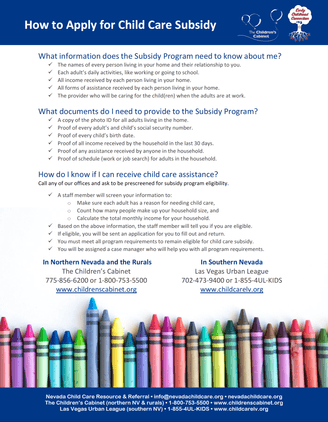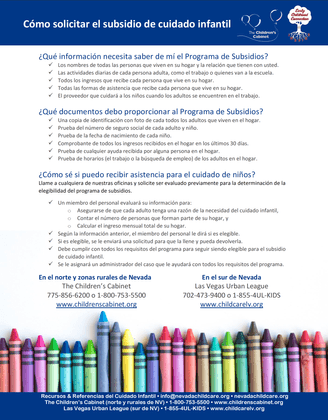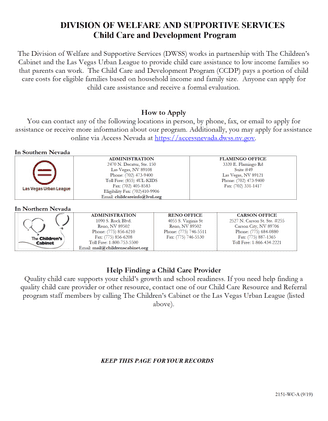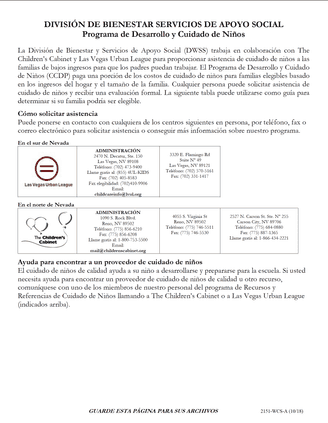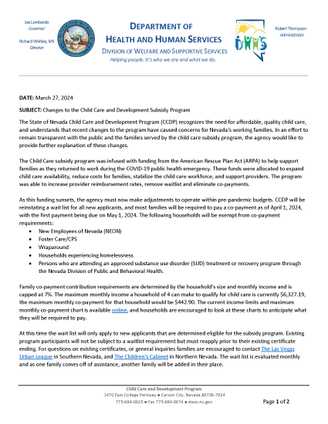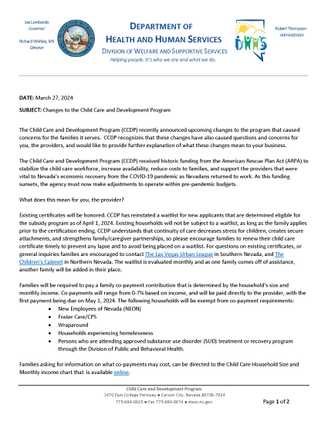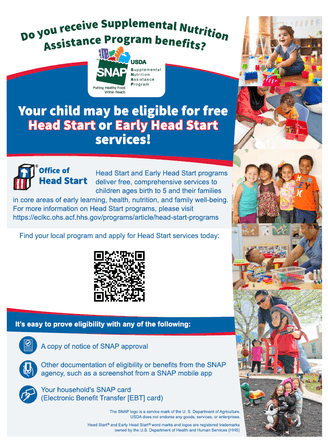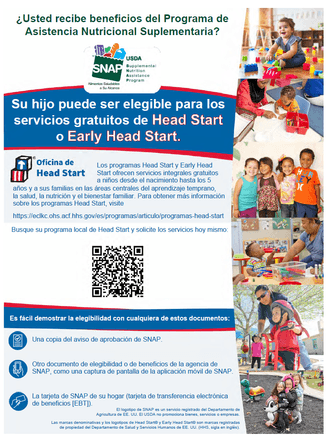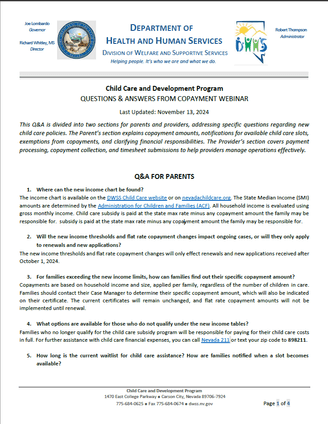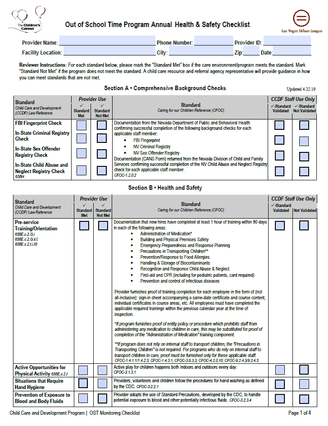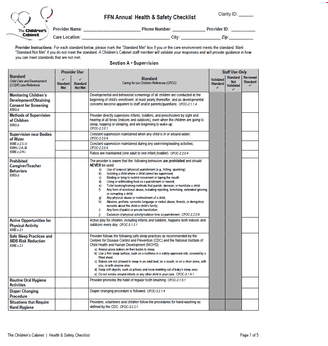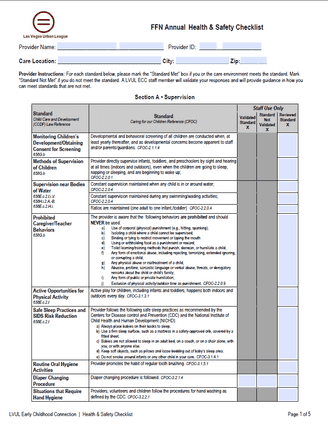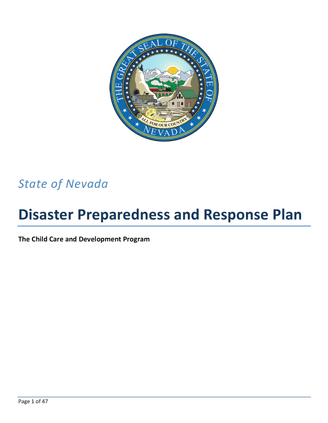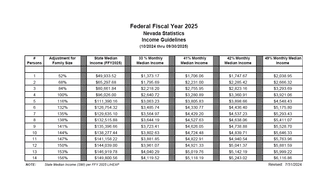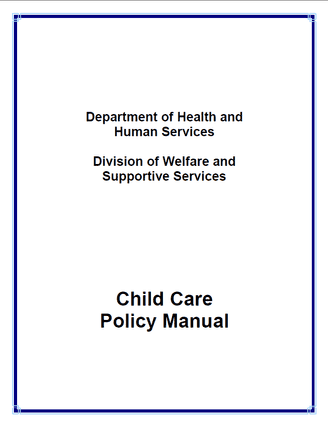Child Care Financial Assistance
Child Care Subsidy Assistance
Child Care Subsidy Assistance supports income-eligible parents with the high cost of child care.
Child Care and Development Fund
This program assists income-eligible families in obtaining child care so they can work, receive job training, or finish a higher education/vocational training program. The Division of Welfare and Supportive Services (DWSS) serves as the lead agency for administering the Child Care and Development Fund (CCDF) in Nevada. DWSS manages eligibility case management in southern Nevada, while The Children’s Cabinet supports families in northern Nevada and offers statewide assistance to child care providers.
SOUTHERN NEVADA: For questions regarding child care subsidy applications, individual cases, or payments, contact ccdppayments@dwss.nv.gov.
NORTHERN NEVADA: For questions regarding child care subsidy applications, individual case,s or payments, contact subsidy@childrenscabinet.org
STATEWIDE: If you are looking for child care or are thinking about providing child care in Nevada, contact providersupport@childrenscabinet.org
Important Updates to The Child Care Subsidy Program
Effective April 1, 2024, The Child Care and Development Program has implemented a wait list for all new applicants applying for child care subsidy. In addition to the wait list, families are now responsible for a family co-payment contribution. See attached documents for additional information, including applicants who are exempt from these requirements.
Head Start Eligibility for Families Receiving Supplemental Nutrition Assistance Program Support
In April 2022, the Administration for Children and Families (ACF) and the Food and Nutrition Service (FNS) released a joint announcement about a change in Head Start policy which makes it easier for Supplemental Nutrition Assistance Program (SNAP) households to become eligible for Head Start programs. ACF expanded its interpretation of “public assistance,” as used in the Head Start statute, to include SNAP. Now SNAP households can demonstrate their eligibility for Head Start by simply showing proof of SNAP receipt or eligibility, such as a copy of a notice of approval, other documentation of eligibility or benefits from the SNAP agency, or an Electronic Benefit Transfer card with SNAP identification number to become categorically eligible for Head Start services. Click on the flyers below for more information.
Questions & Answers from Copayment Webinar
This Q&A provides essential information for families on the new Child Care Copayment Subsidy Changes, effective October 1, 2024.
Information for Parents
The Q&A covers updates from copayment webinars, including copayment responsibilities, income eligibility adjustments, and notifications for available child care slots following the conclusion of COVID relief funding on September 30, 2024. Parents can find guidance on their financial responsibilities, updated eligibility requirements, and important updates on child care availability.
Information for Providers
Providers can access details about updated income eligibility thresholds, Monthly Family Copayment policies, and related adjustments following the end of COVID relief funding on September 30, 2024. This resource includes guidance on payment schedules, timesheet protocols, and copayment handling, aimed at supporting providers in managing the updated subsidy processes.
Checklists
Updated health and safety checklists for licensed providers, including the Out of School Time Program and Family, Friend, and Neighbor (FFN) Annual Health & Safety Checklists. Additional forms for licensed child care facilities are also available here.
Emergency Response Planning
The Child Care and Development Program (CCDP) of the Division of Welfare and Supportive Services is responsible for the management and administration of the Child Care Development Fund (CCDF) subsidy program. The Disaster Preparedness and Response Plan outlines the roles and responsibilities of CCDP and other key supporting agencies to respond to and recover from a disaster that significantly affects a community’s child care infrastructure.
The CCDP program has created a Family, Friend and Neighbor (FFN) provider Emergency Toolkit to assist providers in planning for and responding to Emergencies:
Child Care Household Monthly Income Chart
Updated as of October 1, 2024. More information about this chart is provided on the DWSS Child Care website.
Child Care Policy Manual
The State of Nevada Division of Welfare and Supportive Services offers a comprehensive Child Care Policy Manual, outlining all aspects of the Child Care and Development Program. Key sections include:
- Program Overview: Introduction, general provisions, subsidy availability, priority populations, waitlist management, special considerations, and duplicate benefits prevention.
- Application Process: Types of applications, conflict of interest considerations, new applications, renewals, reinstatements, and referral protocols, including for DWSS NEON.
- Interview Process: Interview sites, interpreter services, authorized representatives, and required forms, such as rights and responsibilities agreements and voter registration applications.
- Eligibility Factors: Verification requirements, income limits, subsidy percentages, non-financial eligibility criteria, including age, special needs, identification, citizenship, and household composition.
- Income and Budgeting: Types of income considered, income deductions, verification, documentation, and budgeting steps.
- Provider Information: Provider requirements, types, rates, attendance, payments, and compliance, along with investigation and recovery processes.
This manual serves as an essential resource for families, childcare providers, and agency staff, ensuring clear understanding and consistent implementation of childcare policies and regulations in Nevada.
